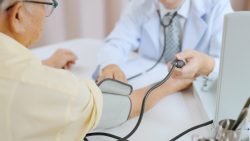 Most people rely on the brief blood pressure checks conducted in the doctor’s office. However, a 2021 study indicates that this trust might be misguided. Only 20% of cardiologists adhere to the prescribed guidelines for measuring blood pressure, despite confidence in their approach. Minor, frequent errors in these routine checks can result in incorrect readings and potentially lead to misdiagnosis.
Most people rely on the brief blood pressure checks conducted in the doctor’s office. However, a 2021 study indicates that this trust might be misguided. Only 20% of cardiologists adhere to the prescribed guidelines for measuring blood pressure, despite confidence in their approach. Minor, frequent errors in these routine checks can result in incorrect readings and potentially lead to misdiagnosis.
The issue stems partly from training deficiencies, affecting not just clinical staff but also patients who use home cuffs without adequate instruction. Typically, blood pressure measurement is covered just once during medical or nursing education, with minimal ongoing training. Furthermore, many readings are conducted by medical technicians or support staff, who often have less comprehensive training than nurses and doctors.
Normal blood pressure is considered to be 120/80 mm Hg, while hypertension is defined as starting at 130/80 mm Hg. Therefore, even small inaccuracies can classify a reading as hypertensive. Such routine mistakes can lead to overdiagnosis and unnecessary medication prescriptions. Accurate measurements are crucial to prevent unnecessary treatments and the associated health risks of overmedication.
Misdiagnoses can arise from several procedural errors, such as using an incorrectly sized cuff, improper arm positioning, leg crossing, a full bladder, or stress-induced hypertension. It is recommend-ed to take at least two readings in one session to ensure accuracy. Typically, doctors will conduct a repeat test during a subsequent visit. This two-step verification helps to eliminate temporary increases due to stress or minor mistakes.
Both patients and health care providers can follow a few simple steps to achieve the most accurate blood pressure readings. Before taking a blood pressure measurement, it is recommended to empty the bladder, abstain from stimulants, remain calm, sit upright with feet flat on the floor, use an appropriately sized cuff, and position it directly on bare skin. Additionally, it is recommended to take a second measurement, allowing a few minutes to pass between each reading.
To view the original scientific study click below:
Assessment of blood pressure skills and belief in clinical readings





